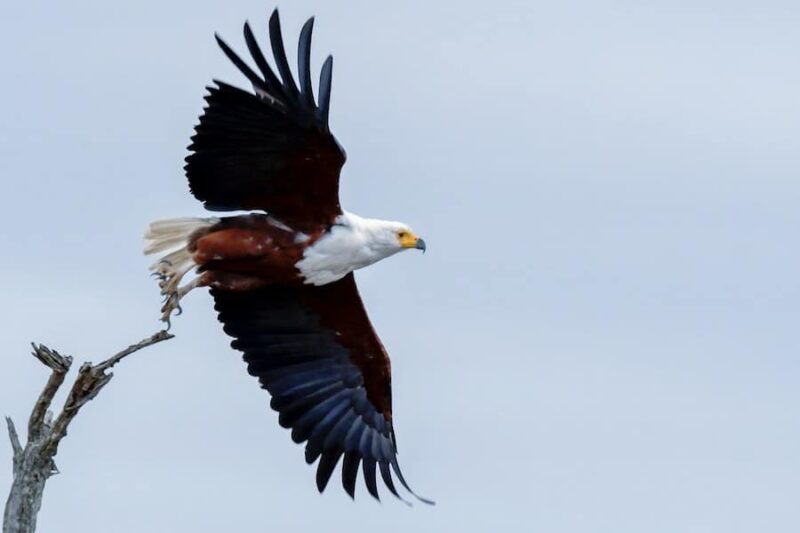Bird migration is a captivating phenomenon that has fascinated humans for centuries. Every year, millions of birds embark on extraordinary journeys, traveling vast distances in search of more favorable habitats. The timing of these migrations is a crucial aspect of bird behavior, as it directly affects their survival and reproductive success. Understanding when birds migrate is not only a matter of scientific curiosity but also holds practical implications for conservation efforts and ecological research. In this article, we will delve into the intricate world of bird migration, exploring the factors that influence timing and unraveling the mysteries behind these incredible journeys.
When do birds migrate?
Bird migration timing varies depending on the species and their geographical location. Generally, birds migrate during specific seasons, spring and autumn, for most regions. During spring, birds migrate from their wintering grounds to their breeding grounds, seeking suitable habitats and abundant food sources. In autumn, they undertake the reverse journey, returning to their wintering grounds. However, it’s important to note that not all bird species migrate, and the exact timing can vary based on factors like climate, availability of resources, and instinctual cues. Thus, the specific timing of bird migration can differ significantly between species and regions.
What Is Bird Migration?
Bird migration refers to the seasonal movement of birds from one geographical location to another. It is a regular and often long-distance journey undertaken by birds in search of more favorable environmental conditions, such as breeding grounds with abundant food resources or warmer climates for wintering. Migration is a remarkable behavior observed in numerous bird species around the world. These journeys can span thousands of miles and involve crossing barriers such as mountains, deserts, and even large bodies of water. Bird migration is driven by innate genetic programming, environmental cues, and the need to ensure survival, reproduction, and access to suitable habitats throughout the year.
Timing Of Bird Migration
The timing of bird migration is a critical aspect of this phenomenon and varies depending on several factors, including the species of bird and their geographic location. Here are some key points regarding the timing of bird migration:
Seasonal patterns:
Migration is often associated with the changing of seasons, particularly spring and autumn. During spring migration, birds move from their wintering grounds to their breeding grounds, seeking suitable nesting sites and abundant food resources. In autumn, they undertake the reverse journey, returning to their wintering grounds where conditions are more favorable.
Hemispheric variations:
Migration timing can differ between the northern and southern hemispheres due to the opposite seasons experienced in each hemisphere. For example, birds in the northern hemisphere migrate northward in spring and southward in autumn, while birds in the southern hemisphere migrate in the opposite direction.
Migration routes:
Birds follow specific migration routes, often called flyways, which can span continents or cross large bodies of water. The migration timing along these routes is influenced by factors such as the availability of stopover sites and favorable weather conditions.
Species-specific variation:
Different bird species have distinct migration schedules based on their ecological requirements and evolutionary adaptations. Some species are considered early migrants, starting their journey earlier in the season, while others are late migrants, beginning their migration later. The migration duration varies among species, ranging from a few weeks to several months.
Environmental cues:
Birds rely on various environmental cues to determine the timing of their migration. These cues include changes in day length, temperature, and food availability. Additionally, celestial cues such as the position of the sun and stars play a role in navigation during migration.
Individual variation:
While migration is a widespread phenomenon, individual birds within a species may vary in their migration timing. Factors such as age, sex, and individual condition can influence when birds initiate their migration.
Different Types Of Bird Migration
Bird migration can be classified into several types based on the distances traveled, the patterns followed, and the strategies employed by different bird species. Some of the main types of bird migration include:
Long-distance migration: This type of migration involves birds traveling vast distances, often crossing continents or even oceans. Examples of long-distance migrants include the Arctic Tern, which travels from the Arctic to the Antarctic and back each year, covering a round trip of over 40,000 kilometers.
Short-distance migration: Short-distance migration refers to the movement of birds over relatively shorter distances, usually within the same region or neighboring regions. Many songbirds exhibit short-distance migration, moving from breeding grounds to wintering grounds within a few hundred kilometers.
Altitudinal migration: Altitudinal migration occurs when birds move vertically within a particular geographic area, usually in response to changing seasons. This type of migration is commonly observed in mountainous regions, where birds shift between higher elevations during the breeding season and lower elevations during the winter.
Nomadic migration: Certain bird species exhibit nomadic migration, where their movements are irregular and unpredictable. These birds may travel in response to fluctuating food availability or other environmental factors without adhering to a fixed migratory pattern or destination.
Partial migration: In partial migration, only a portion of the population migrates, while the rest remains in their breeding or wintering grounds. This phenomenon is often observed in bird species that have a range of habitats available throughout the year, allowing some individuals to stay while others migrate.
Reverse migration: Reverse migration is a relatively rare occurrence in which birds migrate in the opposite direction than expected. It can happen due to various factors, such as unfavorable weather conditions, navigation errors, or disruptions caused by human activities.
Environmental And Climatic Factors Affecting Migration Timing
Various environmental and climatic factors influence the timing of bird migration. These factors are crucial in determining when birds initiate and complete their migration. Here are some key environmental and climatic factors that affect migration timing:
Birds migrate in search of favorable food resources. Food availability plays a significant role in determining when birds begin their journey. They time their migration to coincide with the abundance of food at their breeding or wintering grounds.
Birds are sensitive to temperature changes and adverse weather conditions. They migrate when temperatures become too extreme, or resources become scarce due to changing seasons. Migrating birds often prefer warmer temperatures, favorable winds, and clear skies.
Changes in day length are an essential cue for birds to initiate migration. As daylight hours shorten or lengthen, birds sense these changes and adjust their behavior accordingly, including the timing of their migration.
Birds take advantage of prevailing wind patterns during migration. Favorable winds can provide a tailwind, aiding their flight and conserving energy. Birds may delay or expedite their migration based on wind conditions to optimize their journey.
Many birds rely on stopover sites along their migration routes to rest and refuel. The availability and quality of these stopover sites influence the timing of migration. Birds may adjust their migration timing to coincide with peak resources at these stopover sites.
Climate change can have significant effects on migration timing. Shifts in temperature, altered precipitation patterns, and changing phenology of plants can impact the timing of resource availability, affecting the timing of bird migration. Some studies suggest that climate change is leading to earlier spring migration for some bird species.
Conclusion
Bird migration is a fascinating natural phenomenon that involves the seasonal movement of birds from one area to another. Various factors, including seasonal patterns, hemispheric variations, migration routes, species-specific adaptations, and environmental cues, influence migration timing. Environmental and climatic factors such as food availability, temperature, weather conditions, wind patterns, stopover sites, and climate change play significant roles in determining when birds migrate.
FAQ’s
Why do birds migrate?
Birds migrate to find suitable breeding grounds with abundant food resources and favorable environmental conditions. They undertake long-distance journeys to maximize their chances of survival and reproductive success.
How do birds navigate during migration?
Birds use a combination of navigational cues, including celestial cues (such as the position of the sun and stars), landmarks, magnetic fields, and visual landmarks. They also rely on innate genetic programming and the ability to sense changes in environmental conditions.
Do all bird species migrate?
No, not all bird species migrate. Some birds are resident species, which means they stay in their breeding or wintering grounds year-round. Migration is more common among bird species that breed in temperate regions and need to move to find food during the winter.
How far do birds migrate?
The distance birds migrate varies greatly depending on the species. Some birds may only migrate a few hundred kilometers, while others undertake journeys spanning thousands of miles. For example, the Arctic Tern holds the record for the longest migration, traveling from the Arctic to the Antarctic and back each year.










